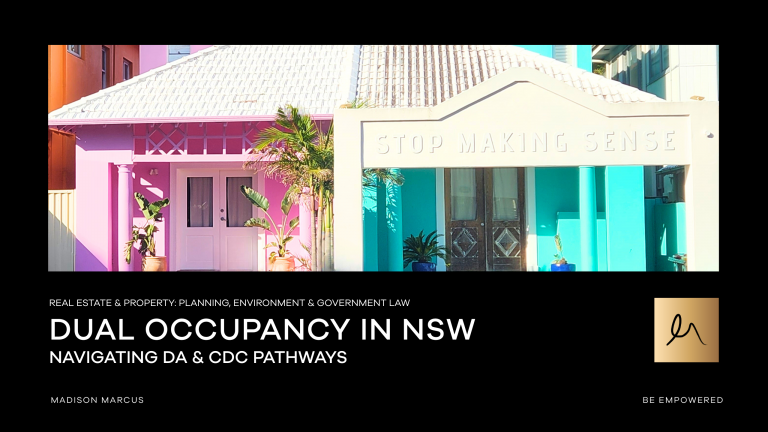As companies across the globe become more conscious of their environmental, social and governance (ESG) responsibilities, there has been an increasing focus on ESG report or ESG reporting. In Australia, there are several regulations and frameworks that govern ESG reporting, making it essential for business owners and decision-makers to understand these requirements and how to comply with them.
This article will give you an overview of ESG reporting in Australia, including the key regulations and frameworks, types of ESG reports and the benefits of ESG reporting.
What Is ESG Reporting?
ESG reporting involves disclosing information on a company’s performance in relation to environmental, social and governance issues. This can include data on a company’s carbon footprint, its policies on diversity and inclusion, and its governance practices, among other things.
Several regulations that govern ESG reporting include:
- The Australian Securities Exchange (ASX) Corporate Governance Council’s Corporate Governance Principles and Recommendations: This framework provides guidelines for good corporate governance practices, including recommendations for companies to disclose their ESG policies and performance.
- The Australian Stock Exchange (ASX) Listing Rules: These rules require listed companies to disclose material information on ESG risks and opportunities that could affect their business.
- The Modern Slavery Act 2018: This Act requires companies with an annual turnover of more than $100 million to report on the risks of modern slavery in their operations and supply chains.
The Benefits of ESG Reporting
Among the benefits of ESG reporting for companies are:
- Enhanced reputation: ESG reporting can help to build a company’s reputation by demonstrating its commitment to sustainability and social responsibility.
- Improved risk management: With an ESG report, companies can identify and mitigate risks related to environmental, social and governance issues.
- Access to capital: Investors are increasingly looking for companies with strong ESG performance. This makes an ESG report an important tool for accessing capital.
- Improved decision-making: ESG reporting can provide companies with valuable insights into their operations, enabling them to make more informed decisions.
Standards and Frameworks for ESG Reporting
As companies recognise the importance of ESG factors in shaping long-term performance and reputation, many are adopting ESG reporting standards and frameworks to guide their reporting efforts. These standards and frameworks provide a common language and structure for ESG reporting. They also make it easier for companies to disclose their sustainability efforts and for stakeholders to compare performance across industries and geographies.
If you are planning to work on your ESG report, here’s an overview of some of the most commonly used standards and frameworks for ESG reporting:
- Global Reporting Initiative (GRI) Standards
GRI is one of the most widely recognised and widely used frameworks for sustainability reporting. It provides a comprehensive set of standards that companies can use to report on their ESG performance.
GRI Standards are organised around a set of sustainability topics, including environmental, social and governance issues. The GRI Standards are designed to be flexible, so companies can choose the topics and indicators that are most suitable to their business.
- Sustainability Accounting Standards Board (SASB) Standards
SASB is a not-for-profit organisation that provides standards for ESG reporting across 77 different industries. The SASB Standards are organised around 26 sustainability topics that are relevant to most industries, including topics, such as labour practices, greenhouse gas emissions and board composition. These Standards are industry-specific, which allows companies to report on issues that are relevant to them.
- Task Force on Climate-related Financial Disclosures (TCFD) Recommendations
The TCFD is a global task force established by the Financial Stability Board to develop voluntary, consistent climate-related financial risk disclosures for companies. The TCFD Recommendations provide a framework for companies to disclose their climate-related risks and opportunities in their mainstream financial filings. This helps companies understand and communicate the financial implications of climate change to their investors.
- Carbon Disclosure Project (CDP) Framework
The CDP is a non-profit organisation that provides a framework for companies to disclose their environmental impact and performance. The CDP Framework covers a wide range of environmental issues, including climate change, water scarcity and deforestation.
The CDP Framework helps companies measure and manage their environmental impact and performance. This also provides investors with consistent and comparable data on environmental performance.
- United Nations Sustainable Development Goals (SDGs)
The SDGs are a set of 17 global goals adopted by the United Nations in 2015, aimed at addressing poverty, inequality and climate change by 2030. Many companies use the SDGs as a framework for their ESG reporting, as they provide a common language and a set of measurable targets for sustainable development. The SDGs include a range of ESG issues, such as poverty, health, education, climate change and gender equality.
These standards and frameworks can help companies prepare more comprehensive and consistent ESG reports, as well as identify areas for improvement in their ESG performance. A standardised framework for ESG reporting also improves transparency and comparability across their industry and the wider market. This can help attract investors and other stakeholders who are interested in sustainable and responsible business practices.
Types of ESG Reports
ESG reports are a way for companies to communicate their performance and progress on sustainability and other ESG-related issues to their stakeholders. In addition to the specific CDP, GRI, SASB and TCFD reports, the different types of ESG reports that companies can prepare will generally fall into the following types:
- Sustainability Report
This ESG report focuses on the environmental and social impacts of a company’s operations. It typically covers issues, such as climate change, energy and resource use, waste management, product safety and quality, labour practices, human rights, community engagement and stakeholder engagement.
- Integrated Report
An integrated report offers a more holistic view of a company’s performance by integrating financial and non-financial information. It often includes issues about financial performance, governance, strategy, risks and opportunities and sustainability.
An integrated ESG report can help to demonstrate the links between a company’s financial performance and its sustainability performance. It also provides a more balanced view of the company’s performance to its stakeholders.
- ESG-Specific Report
This ESG report focuses on ESG issues and demonstrates a company’s commitment to sustainability and its progress on specific ESG issues. Among the issues covered in this report are climate change, biodiversity, human rights, labour practices and governance.
Companies can choose from a range of different types of ESG reports depending on their specific needs and objectives. Whilst each type of ESG report has its own advantages and disadvantages, the key is to choose a report that provides a comprehensive and balanced view of the company’s ESG performance and progress, and that effectively communicates the company’s commitment to sustainability to its stakeholders.
Getting Started with ESG Reporting
If you’re interested in getting started with ESG reporting, here are some tips to help you get started:
- Understand the regulations and frameworks
Familiarise yourself with the regulations and frameworks that govern ESG reporting in Australia and ensure that your reporting is compliant with these requirements.
- Identify your ESG issues.
You need to know the ESG issues that are significant to your business and focus your reporting on these areas.
- Develop a reporting strategy
A reporting strategy should outline your goals, stakeholders, reporting scope and data collection and analysis methods.
- Collect and analyse data
This means gathering and analysing data on your ESG performance, using both quantitative and qualitative data sources.
- Report and disclose
Prepare your ESG report and disclose your performance to your stakeholders using a range of reporting channels, such as your website, annual report and sustainability report.
How Madison Marcus Can Help You
As investors, customers and regulators demand greater transparency and accountability on environmental, social and governance issues, ESG reporting is crucial for companies in Australia. By understanding the regulations and frameworks, identifying material ESG issues and developing a reporting strategy, you can unlock the benefits of ESG reporting, including enhanced reputation, improved risk management, access to capital and improved decision-making.
Looking to prepare your company’s ESG report and comply with the relevant standards and frameworks? At Madison Marcus, our experienced legal team can provide guidance and support on navigating the complex ESG reporting landscape in Australia. We can help your business prioritise ESG practices and prepare comprehensive ESG reports that meet the needs of your stakeholders.
For all enquiries, contact us here.







